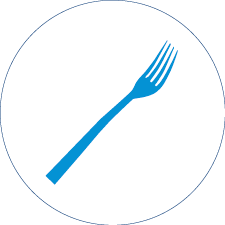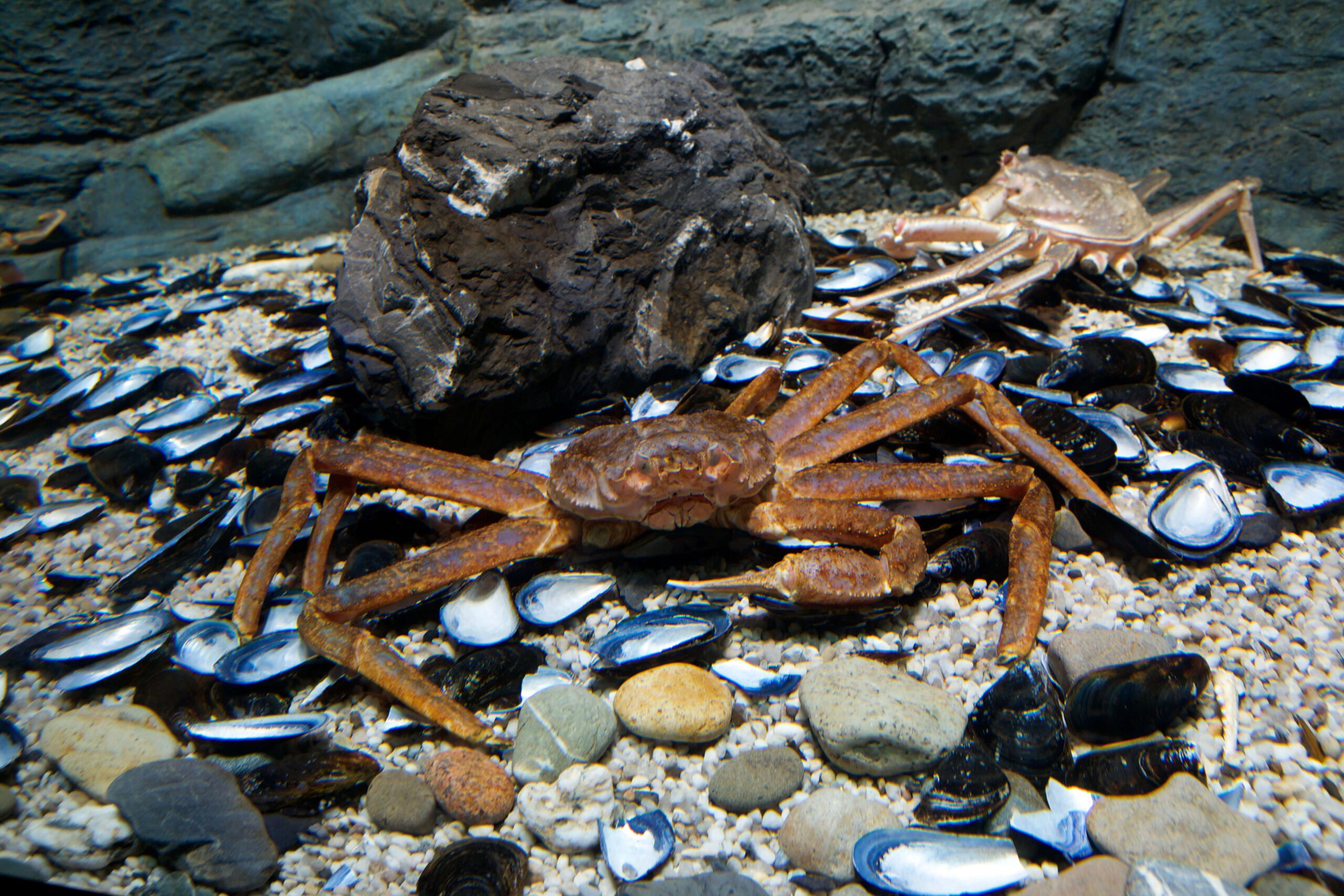
SIZE:
15 cm wide, 90 cm span.
LIFE EXPECTANCY:
12 to 13 years.
LIFE CYCLE:
Sexual maturity is attained when around 5 cm wide for the female and 9.5 cm for the male.
Reproduction takes place in winter and spring, after the female has moulted.
Females choose their partners. Males will fight for their favours and protect the females from predators.
Females produce between 16,000 and 160,000 eggs, which they protect under their bellies. These eggs hatch up to two years later, between the months of April and June. The larvae drift in the water column for two to eight months. Once their shell reaches 3 mm, they settle to the bottom and begin their series of moults to grow until the terminal moult.
An ever-growing armor
The crab’s outer shell is inextensible. It therefore needs to moult to grow. The crab forms a new shell under its old one. When it is ready, the crab gradually sheds its “old armour.” The new carapace is soft and takes some time to harden. The crab is therefore very vulnerable after moulting.
With its relatively small body and long, thin legs, the snow crab looks like a spider. Its shell is round and flat with serrations on the sides. It is typically red to olive green. The five pairs of legs are long and thin with spikes. The first pair has strong claws.
On the bottom, usually between 50 and 350 m depth, but it can be found at depths down to 2000 m.
PREYS:
Shrimp
Urchins
Sea stars
Fish
Organic matter
Crabs help to clean the oceans. They mostly feed on dead plants and animals.
PREDATORS:
Crabs
Halibut
Skates
Seals
MACHINES:
Traps.
REGULATIONS:
- Specified fishing season
- Minimum size of 9.5 cm, excluding females
- Number of traps per boat
- Regulations on traps
- Quotas
- Ban on catching crabs having just moulted
- Fishing zones closed according to observations of North Atlantic right whales.
Snow crab fishing in Québec began as a sideline activity in the 1960s. It began to be a directed activity and grew in importance in the 1980s. Today, the snow crab is one of Québec’s flagship species.
A courageous type of fishing for a tasty feast
Snow crab fishing takes place in April, when the weather is just getting milder, and the ice on the St. Lawrence is beginning to thaw. These sailing (and working) conditions put the fishermen to the test. Nevertheless, they never fail to deliver to Quebecers the species that heralds the arrival of spring and crab parties.
Snow crab is a Smarter seafood-listed species.
BENEFITS:
Snow crab is an excellent source of omega-3 fatty acids and protein, as well as vitamin B12 and zinc. Its meat is lean.
LET’S COOK:
Tender, melting and stringy texture. White meat with a delicate, slightly sweet taste. Snow crab can be used in a multitude of dishes: guédilles (snow crab rolls), crab cakes, salads, quiches, spring rolls, chowders, etc.
OUR CULINARY ADVICE:
- Ideally, you should buy crab while it is still alive. If the legs dangle when you pick it up, it is best to choose another crab.
- If you buy it cooked, its shell should be red and slightly moist.
- To determine the quantity, allow one or two crabs per person, depending on the size of the crab and the person’s appetite.
- Cook the whole snow crab for 15 minutes in boiling salted water, then plunge it quickly into cold water or ice to stop the cooking process.
Arm yourself with pliers or a good pair of scissors to break off the leg sections and access the prized meat.
Plan for a small salad, bread, flavoured butter sauces, white wine or non-alcoholic beverages. And do not forget the napkins and even a few bibs, as you will likely make a good mess.
Accompanied by good music, we guarantee you will have a great crab party.






